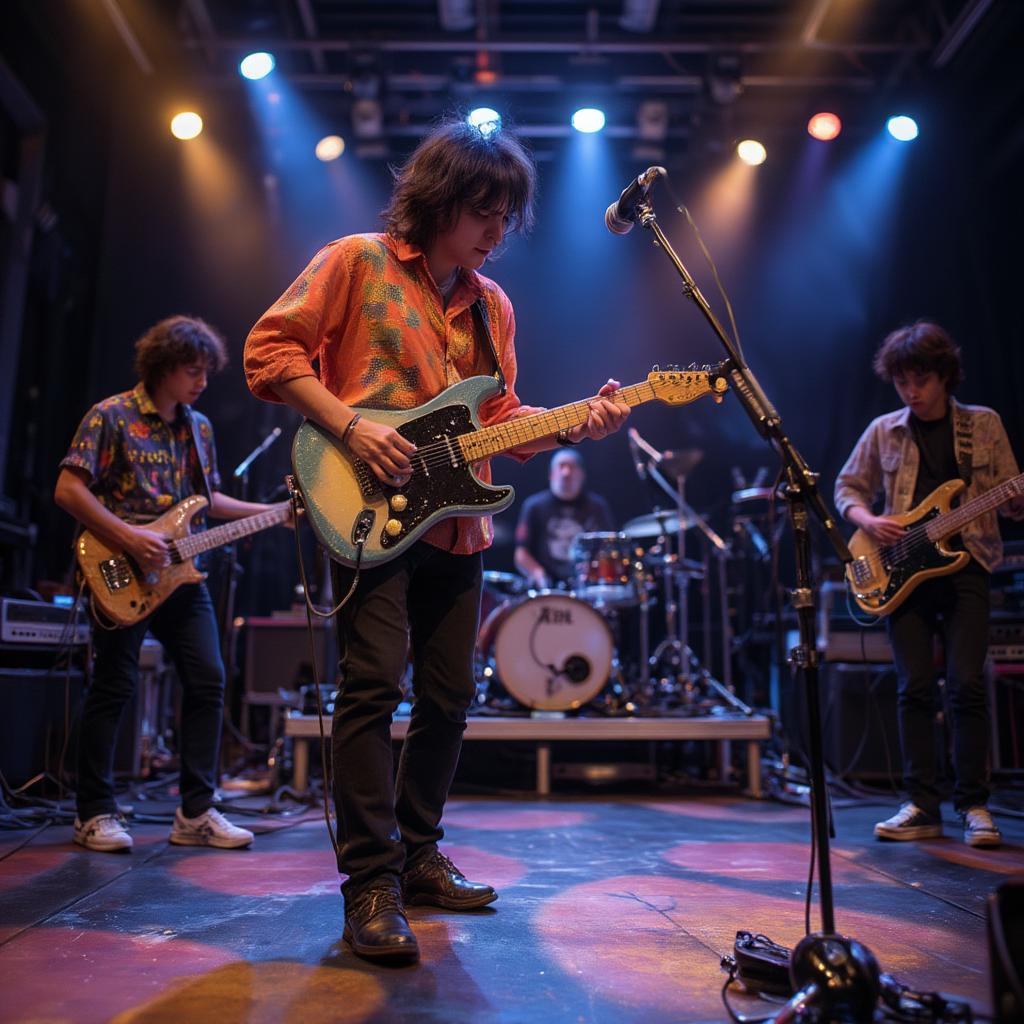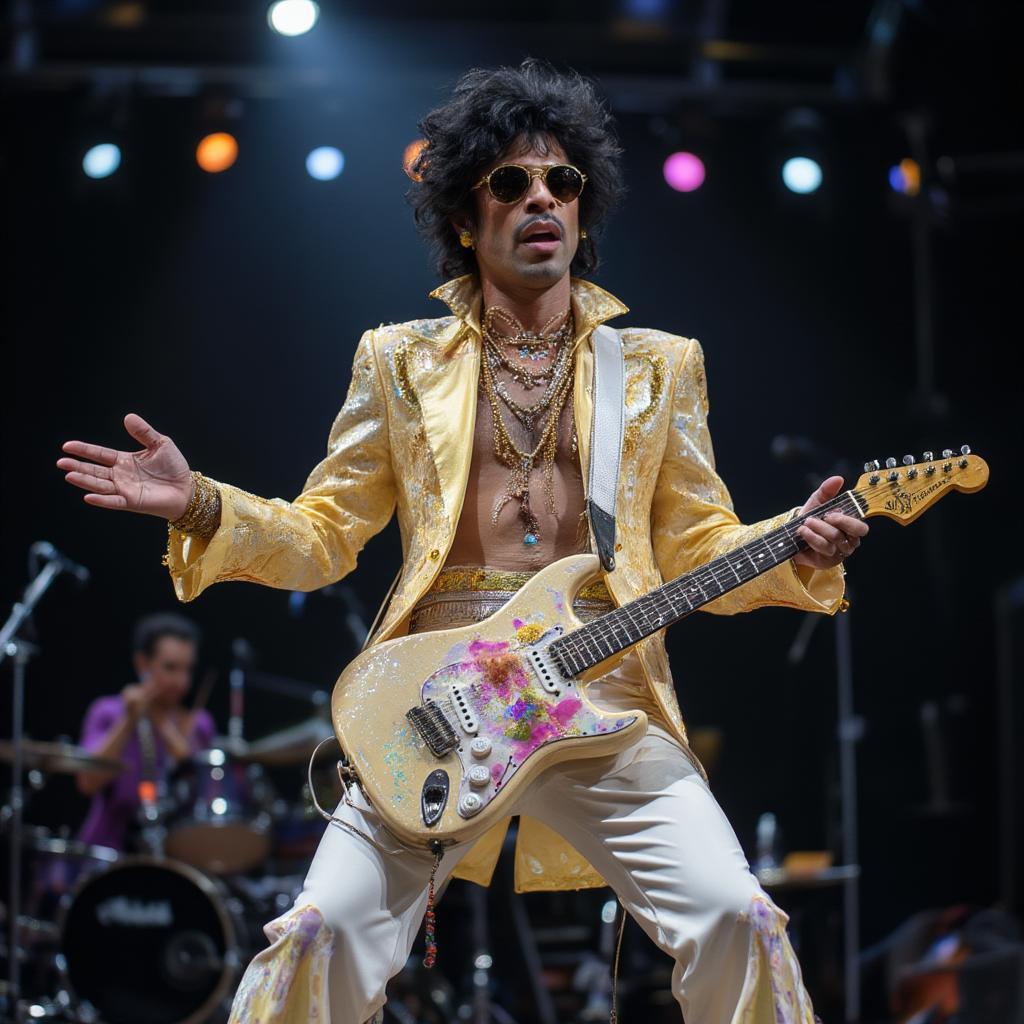Grooving to the Rhythm: A Deep Dive into Japanese Funk Bands

Japanese Funk Bands offer a unique and vibrant take on the genre, blending traditional funk elements with Japanese musical sensibilities. This fusion creates a captivating sound that has captivated audiences worldwide. From the soulful vocals to the intricate instrumentation, Japanese funk music provides a rich and rewarding listening experience. This article delves into the history, key artists, and defining characteristics of Japanese funk, exploring its evolution and enduring appeal.
The Genesis of Funk in the Land of the Rising Sun
Funk music arrived in Japan during the 1970s, riding the wave of global popularity surrounding artists like James Brown and Parliament. Japanese musicians quickly embraced the genre’s infectious grooves and energetic rhythms, incorporating them into their own musical landscape. Early pioneers like Masayoshi Takanaka helped lay the foundation for Japanese funk, blending American funk influences with traditional Japanese instruments and melodic structures. This cross-cultural pollination gave rise to a distinct sound that set Japanese funk apart from its Western counterparts.
Early Adopters and the Rise of City Pop
The late 1970s and early 1980s saw the emergence of “City Pop,” a genre closely related to funk that incorporated elements of jazz, soul, and disco. City Pop often featured sophisticated arrangements, lush instrumentation, and smooth vocals, reflecting the cosmopolitan atmosphere of Japan’s burgeoning urban centers. Artists like Tatsuro Yamashita and Mariya Takeuchi became prominent figures in the City Pop scene, their music embodying the stylish and sophisticated sound of the era. This period laid the groundwork for the continued evolution of Japanese funk.
Defining Characteristics of Japanese Funk
While drawing inspiration from American funk, Japanese funk bands developed their own unique sonic signature. Often characterized by intricate basslines, tight drumming, and soaring melodies, Japanese funk incorporates elements of traditional Japanese music, creating a captivating blend of East and West. The use of instruments like the koto and shakuhachi adds a distinctive flavor to the music, further differentiating it from traditional American funk.
The Influence of Traditional Japanese Music
The incorporation of traditional Japanese instruments and scales into funk arrangements is a defining characteristic of the genre. This fusion creates a unique sonic tapestry that blends ancient and modern sounds. For example, the pentatonic scales commonly used in traditional Japanese music often find their way into funk melodies, adding a distinct Eastern flavor to the music.

Key Artists in the Japanese Funk Scene
Numerous Japanese funk bands have made significant contributions to the genre, each with its own unique style and approach. From established veterans to rising stars, the Japanese funk scene continues to thrive and evolve. Some notable artists include:
- Casiopea: Known for their virtuosic instrumental performances and innovative use of synthesizers.
- T-Square: A jazz fusion group with strong funk influences, renowned for their complex arrangements and technical prowess.
- Kakashi: A contemporary funk band blending traditional Japanese instruments with modern funk grooves.
The Resurgence of Japanese Funk in the Modern Era
In recent years, there has been a renewed interest in Japanese funk, both domestically and internationally. This resurgence is driven in part by the growing popularity of City Pop and the rediscovery of classic Japanese funk recordings. New artists are also emerging, building upon the legacy of their predecessors and pushing the boundaries of the genre.
Where to Discover Japanese Funk
Exploring the world of Japanese funk can be a rewarding journey for music lovers. Resources for discovering new artists and music include:
- Online Music Platforms: Streaming services like Spotify and Apple Music offer extensive catalogs of Japanese funk music.
- Specialty Record Stores: Many record stores specialize in Japanese music, providing a curated selection of vinyl and CDs.
- Online Communities: Online forums and social media groups dedicated to Japanese music offer a platform for sharing recommendations and discovering new artists.
Conclusion: The Enduring Legacy of Japanese Funk
Japanese funk bands have carved out a unique space within the global funk landscape. By blending the infectious grooves of American funk with the rich musical traditions of Japan, they have created a vibrant and enduring genre that continues to captivate audiences worldwide. From the pioneers of the 1970s to the contemporary artists pushing the boundaries of the genre today, Japanese funk offers a testament to the power of music to transcend cultural boundaries and create something truly special. Dive into the world of Japanese funk and experience the electrifying fusion of East meets West.

FAQ: Your Questions About Japanese Funk Bands Answered
- What is the difference between Japanese funk and American funk? Japanese funk often incorporates traditional Japanese instruments and melodic structures, giving it a distinct flavor compared to American funk.
- Who are some of the most influential Japanese funk artists? Influential artists include Casiopea, T-Square, and more contemporary bands like Kakashi.
- Where can I listen to Japanese funk music? Streaming platforms, specialty record stores, and online communities are great resources for discovering Japanese funk.
- What is City Pop and how is it related to Japanese funk? City Pop is a closely related genre that emerged in the late 70s and early 80s, incorporating elements of funk, jazz, soul, and disco.
- Is Japanese funk still popular today? Yes, there has been a resurgence of interest in Japanese funk in recent years.
- What are some key characteristics of Japanese funk music? Intricate basslines, tight drumming, soaring melodies, and the incorporation of traditional Japanese instruments are common characteristics.
- How did funk music arrive in Japan? Funk arrived in Japan in the 1970s, influenced by the global popularity of American funk artists.
- Are there any Japanese funk festivals or events? While not specifically dedicated to funk, many music festivals in Japan feature funk artists.
- What is the best way to learn more about Japanese funk? Explore online resources, listen to music, and connect with online communities dedicated to Japanese music.




